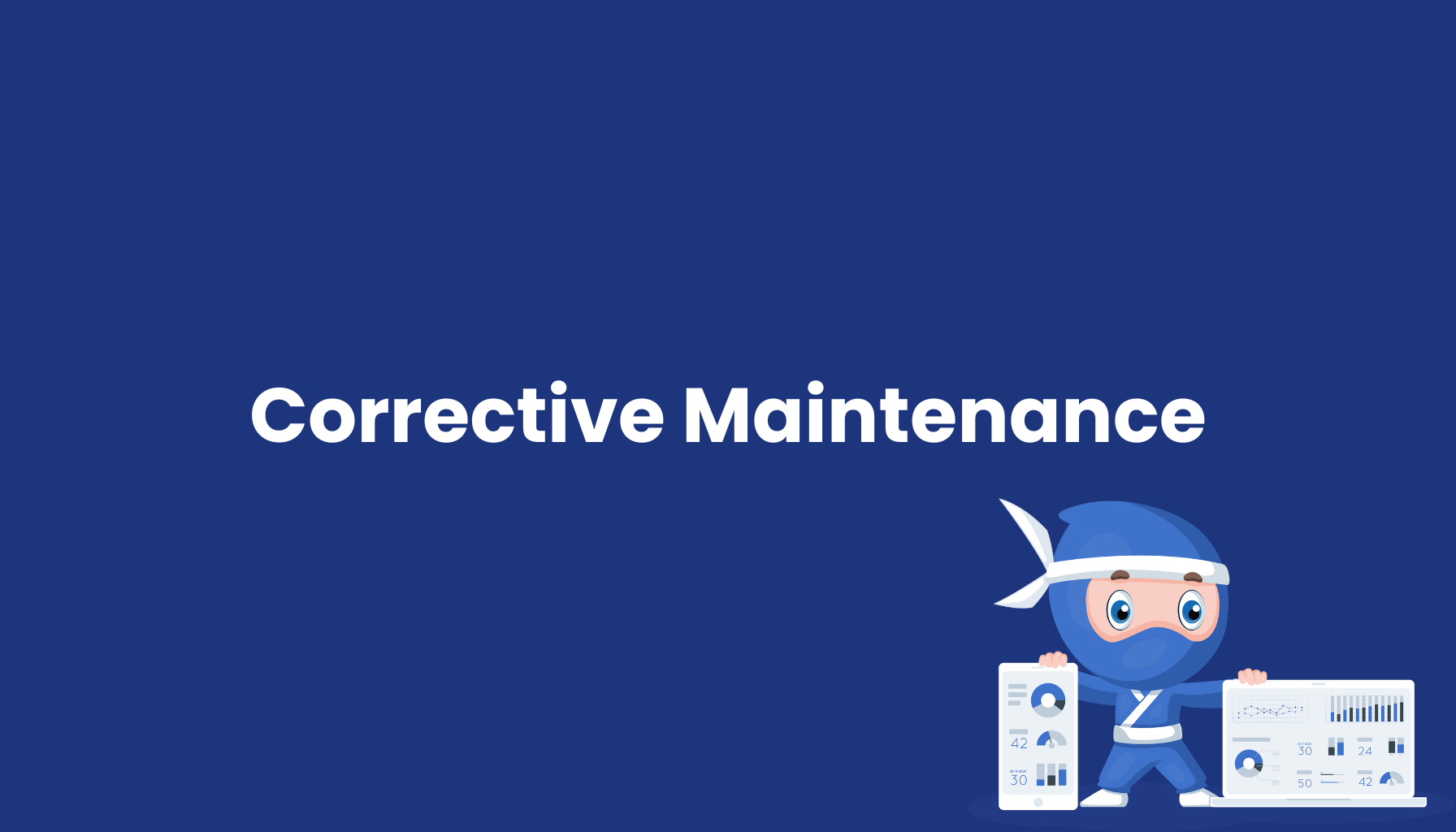Corrective Maintenance

Definition
Corrective Maintenance refers to all planned and unplanned maintenance measures performed after a fault or failure has occurred to restore the original functionality of a system, machine, or facility. This reactive maintenance strategy encompasses both immediate repairs and systematic failure analysis to prevent future failures.
Types of Corrective Maintenance
Emergency Maintenance: Immediate, unplanned repairs for critical system failures that cause safety risks or production downtime. 24/7 availability and rapid response teams ensure quick intervention.
Deferred Corrective Maintenance: Planned repairs of non-critical components that can be postponed until the next maintenance window. Risk assessment prioritizes repairs by criticality and failure probability.
Run-to-Failure Maintenance: Deliberate strategy for cost-effective, non-critical assets where repair costs are lower than preventive maintenance.
Maintenance Strategy Integration
Reliability-Centered Maintenance (RCM): Systematic analysis to determine optimal maintenance strategies. Failure Mode and Effects Analysis (FMEA) identifies critical failure modes.
Total Productive Maintenance (TPM): Holistic approach with autonomous maintenance by machine operators. Corrective maintenance is minimized through preventive measures.
Risk-Based Maintenance (RBM): Prioritization of corrective actions based on risk assessment and business impact analysis.
Benefits and Challenges
- Cost Efficiency: Lower planning costs and avoidance of unnecessary preventive measures
- Resource Optimization: Maximum utilization of asset lifespan until actual failure
- Learning Opportunities: Failure analysis generates valuable knowledge about asset behavior
- Flexibility: No rigid maintenance schedules but demand-driven intervention
- Challenge: Unpredictable costs and possible production interruptions
Applications
Production Equipment: CNC machines, robot cells, and conveyor systems require rapid corrective maintenance during unplanned failures. Mean Time to Repair (MTTR) is minimized through optimized spare parts logistics.
Utility Infrastructure: Power grids, water supply, and telecommunications systems use emergency response teams for critical disruptions. Redundant systems bridge downtime.
IT Systems: Server hardware and network components are maintained through break-fix contracts or internal IT teams. Hot spares enable quick recovery.
Vehicle Fleets: Commercial vehicles and construction machinery receive corrective maintenance through mobile service teams. Telematics data supports remote diagnostics.
Workflow and Process Optimization
Incident Detection: Condition monitoring, alarm systems, and operator rounds identify failures as quickly as possible. IoT sensors enable real-time failure detection.
Work Order Management: Computerized Maintenance Management Systems (CMMS) orchestrate repair workflows. Priority classification and resource scheduling optimize response times.
Repair Execution: Standardized work instructions, safety procedures, and quality control ensure efficient, safe repairs. Mobile maintenance apps support technicians on-site.
Documentation and Feedback: Completion reports, failure analysis, and lessons learned are systematically captured for continuous improvement.
Root Cause Analysis
Failure Analysis Techniques: 5-Why analysis, fishbone diagrams, and fault tree analysis identify fundamental failure causes. Pareto analysis prioritizes most frequent problem sources.
Forensic Investigation: Metallurgy analyses, vibration measurements, and thermography uncover hidden failure mechanisms. Expert systems support diagnostic processes.
Corrective Action Plans: Structured CAPA (Corrective and Preventive Actions) prevent recurrence of similar failures. Implementation tracking monitors measure effectiveness.
Spare Parts Management
Critical Spares Inventory: Risk-based stocking strategy for high-impact, low-frequency failures. ABC analysis optimizes inventory levels by criticality and costs.
Supplier Management: Emergency procurement processes and preferred vendor agreements ensure rapid parts procurement. Global supply networks reduce delivery times.
Condition-Based Replacement: Predictive analytics determine optimal replacement timing based on condition data instead of fixed intervals.
Technology Integration
Mobile Workforce Management: Smartphone apps enable real-time communication between technicians and operations center. Augmented reality supports complex repairs.
Digital Twin Integration: Virtual plant models simulate repair scenarios and optimize maintenance procedures. Historical data analytics improves repair planning.
AI-powered Diagnostics: Machine learning analyzes failure patterns and suggests optimal repair strategies. Natural language processing extracts insights from maintenance reports.
KPIs and Performance Measurement
Mean Time to Repair (MTTR): Average repair time from failure detection to restoration. Benchmark comparisons identify improvement potential.
Mean Time Between Failures (MTBF): Reliability metric for asset performance and maintenance effectiveness. Trend analyses show deteriorations.
Overall Equipment Effectiveness (OEE): Integration of availability, performance, and quality impact of corrective maintenance on productivity.
Future Trends
Predictive Maintenance Integration: Transition from purely reactive to proactive-reactive maintenance through IoT and AI. Condition monitoring reduces unplanned failures.
Autonomous Maintenance: Robotics and AI automate routine corrective actions. Self-healing systems automatically fix simple problems.
Digital Maintenance Ecosystems: Integrated platforms connect asset management, inventory control, and service delivery for optimal corrective maintenance.
Corrective Maintenance evolves into an intelligent, data-driven system that optimizes reactive maintenance and minimizes downtime through digitization, AI integration, and predictive approaches.


